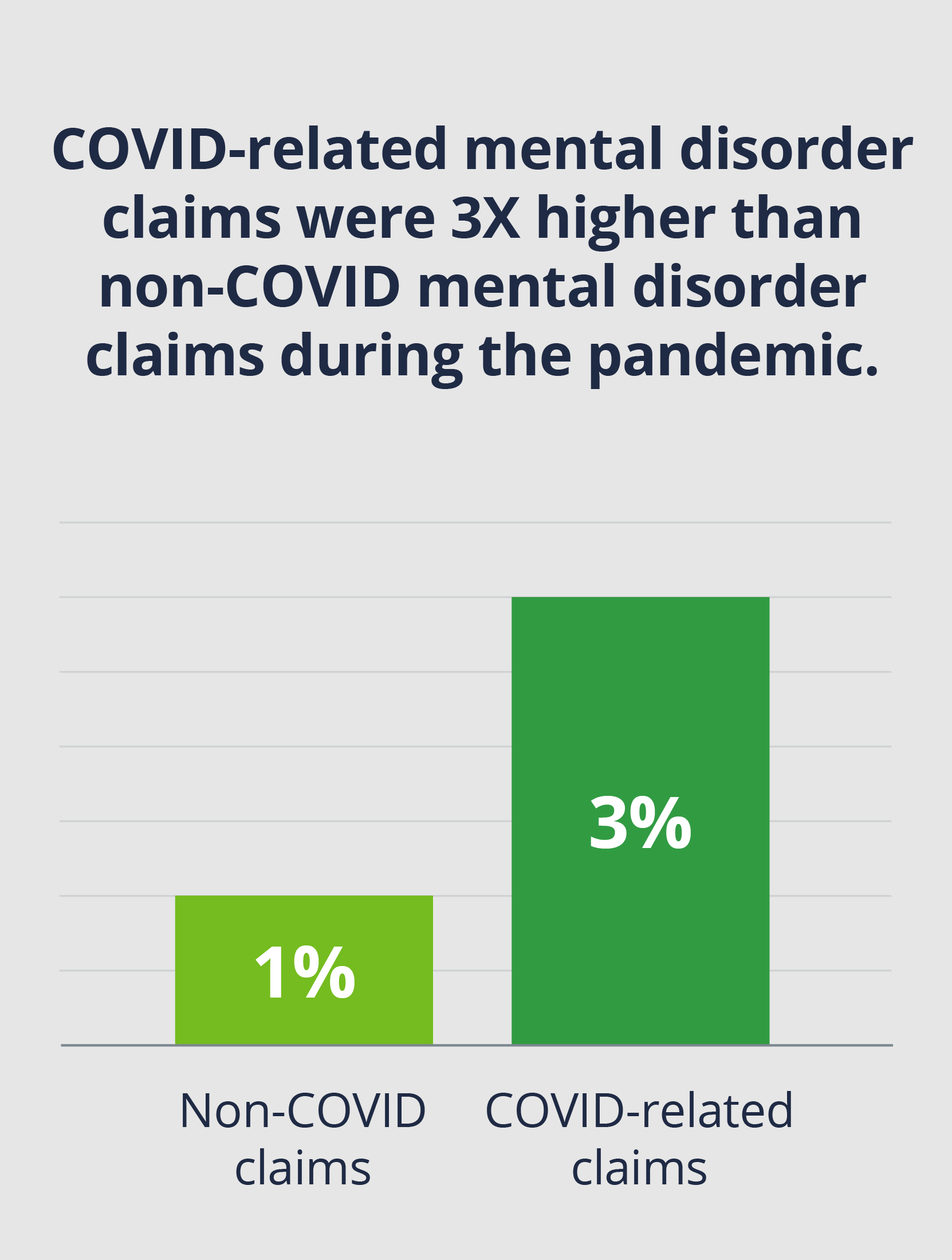Blog
Workers’ Comp for Remote Employees: Here’s What You Need to Know
This blog post can also be found on our Coronavirus Resource Center.
Much has changed in the two-and-a-half years since March 2020, when most of the country went into lockdown due to COVID-19 and most businesses moved to remote work models. As a result of mass layoffs and employee absences due to COVID-19, the Great Resignation was born.

According to the US Bureau of Labor Statistics, 47 million Americans voluntarily quit their jobs during this time as a result of COVID-19 and the initiation of the Federal Stimulus program. However, since the fall of 2021, workforce participation has been on the incline and by February 2022, 1.87 million workers had rejoined the workforce, which was triple the 621,000 who returned in the three prior months. Part of the reason is businesses have adopted more flexible remote work options to entice candidates, with the knowledge that their business can still run effectively without the workforce being in the office five days a week.
According to a Pew Research Center survey, most workers who said their job responsibilities could be handled remotely never or rarely worked from home before the pandemic. Only one out of five survey respondents said they worked from home all or most of the time before COVID-19.
However, by the time of the December 2020 survey, 71% of those workers were doing their job from home most of the time or all the time. And most of them admitted that they would want to keep working from home after the pandemic.
Now that workers are coming back, employers have redirected their focus to the health and safety of their employees. Now more than ever, businesses are addressing overall employee wellness, including both physical injuries and mental health. A joint study performed by Eurofound and the United Nations International Labor Office found 41% of employees who frequently work remotely experienced elevated stress levels while only 25% of onsite employees endure high stress. Employers will need to step outside the singular focus of physical injury and take into consideration their employees’ emotional and mental well-being.
From an employer's perspective, the shift to remote work as a new normal has been challenging in many ways. Some of the main concerns involve the safety of the home environment, mental health and stress, and workers' compensation insurance. In this article, we will examine workers' compensation (WC) for the remote worker and offer ways you can help your staff work more safely at home both now and in the future.
Does Workers' Comp Cover Remote Workers?
Yes, remote and telecommuting workers typically are covered under WC policies if the injury or illness occurs while an employee is completing a work task during work hours.
In most cases, the remote worker has the burden of proof, meaning that they must be able to demonstrate that they were acting in the interest of their employer at the time they got sick or injured. However, the courts have found that, even though the employer does not have control over an employee's home environment, lack of evidence is not a reason to deny claims.
Therefore, employers are responsible for providing the same safe work environment for both their on-site workers and remote workers.
What Are the Most Common Work-from-Home Injuries?
The challenge comes from the fact that your employees’ home environment does not have the same safety standards you have put in place at your workplace. For example, they are at greater risk of slipping on water spilled from a dog bowl, tripping over their child’s toys, or falling down the stairs.
The two most frequent categories of injuries that claims examiners see with work from home injuries are cumulative injuries (repetitive stress, usually resulting from poor ergonomics) and slips, trips, and falls. Let’s look at these injuries more in depth, including prevention measures.
Cumulative Injuries
The term "cumulative injuries" refers to damage and pain caused by repetitive movement and overuse. For the telecommuter, many of these injuries, which include painful conditions affecting muscles, tendons, and nerves, result from poor ergonomics at the workstation. Carpal tunnel syndrome, tendonitis, bursitis, and back pain are some of the most common cumulative injuries.
An ergonomic workstation helps you sit comfortably at a computer screen. Your neck isn't bent back, your arms aren't extended beyond your side or lifted, your wrists and hands aren't turned sideways or upward, your spine isn't twisted, and your lower back is supported.
Here is our checklist to use to help your employees prevent cumulative workstation injuries:
| Top 6 Temporary Ergonomic Techniques |
|---|
| Use a separate keyboard and mouse. Arrange the workstation so that your elbows hang directly beneath your shoulders without shrugging, having them held or pushed away from your sides, or having to hold them forward. Aim to have your wrists in a neutral, comfortable position that does not require you to flex or extend them. |
| Elevate the monitor. Raise your computer monitor to eye level. |
| Adjust chair and table. If you do not have an adjustable desk chair, use folded towels or pillows to raise the seat and support your upper and lower back. Your hips and knees should be at about 90 degrees, with your feet firmly on the floor. (Place a box or large book under your feet if necessary.) |
| Prevent monitor glare. Adjust blinds and curtains to prevent glare or bright backlighting around your computer screen. |
| Take frequent breaks. Stand up when you can during calls and try to get up and move around every 30 minutes. |
| Use a headset. Using a headset when on calls will help keep your hands free and help reduce back pain and muscle fatigue. |
Slips, Trips, and Falls While Working from Home
Slips, trips, and falls are some of the most frequently reported accidents in the US, according to the National Safety Council.
Slips are when you lose your footing and balance. Trips occur when you lose your balance because part of your body hits a fixed object. Both occurrences can cause a fall. Falls also can happen when a means of support, such as a railing, fails or is missing.
Most workplaces have a specific plan to address slip, trip, and fall hazards, but when you transfer work activities to the home, the risk of these injuries can increase. While we are working at home, we may not be aware of potential hazards, such as toys, spills, or phone charger cords.
| Here are some tips for preventing slips, trips, and falls at home. |
|---|
| Slips. Always wear proper footwear inside the home. Socks can be slippery. Promptly clean up spills and any mud or water tracked into the house by people or pets. |
| Trips. Keep your home clear of clutter. Make sure your home is well-lit and that all cords are safely secured and out of the way. Pay attention to where you are walking when you are on the phone. |
| Falls. Always use a handrail when taking the stairs. Make sure the stairway is well-lit and avoid carrying too much up or down the stairs. |
It is a good idea to encourage your employees to always be aware of their surroundings. Remind them that complacency can lead to injuries that could have been avoided.
How Should an Employer Handle a Work-from-Home Injury?
Unfortunately, it is nearly impossible to prevent all workplace injuries, and this is especially true for employees who work from home. Therefore, employers need to understand what injuries may be considered work-related and develop best practices to prepare supervisors and Human Resources. That way, injuries can be addressed as they occur and reported to the insurance carrier, if necessary.
Coming and Going Rule and Workers' Comp
When there is a physical separation of work and home, compensability is straightforward with the Coming and Going Rule. An employee who is injured while commuting to or from work is not eligible for WC benefits since the employee is not "rendering any service to the employer" during a typical commute, with exceptions. However, this rule is less applicable when the home functions as a secondary job site.
Let's look at two remote work examples when workers' comp benefits are likely to apply.
Employee’s Home as a Second Job Site
As employers transition to a hybrid model where employees are working from home and in the office, the question becomes how the Coming and Going rule would apply when an employee travels from home to their office. If the employee gets into an accident during this travel time, would it be covered under workers' compensation or would the Coming and Going Rule still apply?
As mentioned previously, injuries sustained during a regular commute to and from a workplace are not compensable but one of the exceptions to this rule is when the home becomes a second workplace. In general, whether an employee’s home is a second workplace or worksite depends on whether the employer expressly approved or authorized the employee to work from home or if the employee chose to work from home out of personal convenience. In Bramall v. Workers' Comp. Appeals Bd. (1978), the injuries sustained in a motor vehicle accident during the commute home was found to be in the scope and course of employment since the employer knew the employee regularly took work home. Although there were no explicit instructions to take the work home, there was tacit or implied approval.
In contrast, in a subsequent ruling in Santa Rosa Junior College v. Workers' Comp. Appeals Bd. (1985), the California Supreme Court found the mere fact that the employee regularly works from home does not make it a second jobsite. The court held that the employee was not required to work from home, but it was the employee’s choice to work from home, and the court ultimately found that the accident occurred during a routine commute. Again, one of the factors that may be considered for compensability is whether the employee chose to work from home, if it was required by the employer, or if there was approval from the employer.
The other consideration is whether the employee has a fixed place of employment. In the scenario of an hourly wage worker who has a fixed hybrid schedule, for example, the Coming and Going Rule can arguably apply since the worker has a fixed time and place for regular commuting. In the case of a salaried employee however, this may be less clear, especially if the employee regularly works from home with the knowledge of their employer. What if the salaried employee goes into the office and comes home to perform more work? Would an accident during the commute be considered within the course and scope of employment? With laptops and flexible work schedules, work can be done anywhere and at any time, complicating the defining line of when work starts and ends.
Each case should be evaluated based on its own facts and individual merits. If an employee does file a workers' compensation claim that occurred during their commute, the case should be discussed thoroughly with the insurance carrier and WC broker.
Personal Comfort Doctrine
Another claim might occur when an employee is injured while getting coffee or going to the bathroom at home. Under the personal comfort doctrine, an injury is compensable if the employee was engaging in activities necessary for their personal comfort or welfare and part of "normal working conditions."
This personal comfort doctrine applies to employees who work from home, meaning that applicable activities can range from eating lunch, drinking water or coffee, going to the bathroom, and even taking a break for a smoke.
There is a myriad of ways that an employee can get injured at home. What if an employee trips over a dog on their way to grab work material from a printer, trips on their child's toys at home, or falls off a chair? How can an employer correctly assess if the employee's activity was in the scope or course of employment or whether it was strictly personal? It makes it even more complicated when there are no witnesses to corroborate the employees' statements.
Fortunately, as an employer, you do not have to make these decisions, nor should you. Your WC carrier should make the assessment in collaboration with counsel after their investigation is completed.
Your responsibility is to take the first step by reporting an at-home injury claim. Take a detailed written statement from the employee to understand what the employee was doing at the time of the injury and when and where it happened.
Ask your employee to take photos of the injury (cuts, bruises, swelling, etc.) and the injury site when possible (broken chair, dangling cord, etc.). The more information you can gather for the carrier, the easier it will be to assess compensability.
It can be challenging to assess if a home injury is genuinely work-related, so if you have any doubts about reporting a claim, we encourage you to contact your claims representative or consultant.
Increase in Psyche and Stress Claims
Some employees may be excited about going back to the office, having felt isolated during the first two years of the pandemic, while others may enjoy or need the flexibility of working from home. For these employees, going back to work to the office can be an added stressor, as they may have long commutes or daycare and school conflicts. In addition, the effect of long COVID on mental health needs to be considered.
These factors could lead to an increase in psychiatric mental stress claims. In a study conducted by the California Workers' Compensation Institute (CWCI) comparing mental disorder claims from the pandemic period of March 1, 2020 to July 31, 2022, COVID-related mental disorder claims constituted 3% of claims in comparison to 1% for non-COVID mental disorder claims.
 When comparing all claims from the pandemic period versus the same months prior to the pandemic period, there was a slight increase in mental disorder claims (1.7% versus 1.6% claims), according to CWCI.
When comparing all claims from the pandemic period versus the same months prior to the pandemic period, there was a slight increase in mental disorder claims (1.7% versus 1.6% claims), according to CWCI.
It may be too soon to tell if there will be a rising trend in psychiatric claims, but employers should still be cognizant of this possibility and be prepared to prevent and address stress claims should they arise. Uncertainty can be a cause of stress for employees, so effective communication can help reduce stress in the workplace, as well as having an established protocol to address complaints and employee concerns. Individual employees may have outside stressors and pre-existing mental health issues, so having resources for employees outside of workers' compensation can help reduce claims.
Foster Awareness of Working Safely at Home
As more people get vaccinated, we are all eager to see the pandemic in the rearview mirror. However, many employers will continue to offer remote work options to their employees in our post-COVID world. Therefore, employers should continue to foster awareness of working safely at home.
Your insurance carrier may have safety materials such as training webinars, blog posts, and online remote workstation ergonomic evaluations that you can use as part of your safety emphasis.
If an employee suffers an injury while working from home and you have questions or concerns, please contact your Woodruff Sawyer Account Executive or WC Consultant to discuss next steps. For preventive measures, we can refer you to an ergonomist or Loss Control department at your insurance carrier.
Read our latest Property and Casualty Looking Ahead Guide where we forecast upcoming trends, including workers’ compensation considerations, the impact of the pandemic, accelerating climate changes, and litigation trends.
Authors
Table of Contents















